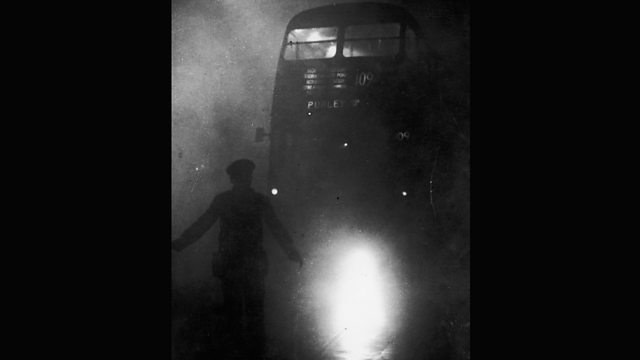The Great London Smog
Thousands died as a thick polluted fog engulfed London in 1952. Freezing weather trapped coal fire pollution in the city. Those with respiratory problems were most at risk.
Thousands died as a thick polluted fog engulfed London in 1952. People with respiratory and cardiovascular conditions were most at risk. The smog was a combination of pollution from millions of coal home fires and freezing fog. Unusual atmospheric conditions trapped the pall over the city for four days. The civil disaster changed Britain. Two years later, the government passed the Clean Air Act to reduce the use of smoky fuels such as coal. Alex Last speaks to Dr Brian Commins, who worked for the Medical Research Council's Air Pollution Unit set up at St. Bartholomew's hospital in London in the 1950s.
Photo: A London bus conductor is forced to walk ahead of his vehicle with a flare to guide it through the smog, 9th December 1952. (Photo by Keystone/Hulton Archive/Getty Images)
Last on
More episodes
Broadcast
- Thu 14 Dec 2017 08:50GMT大象传媒 World Service except News Internet
Featured in...
![]()
Witness Archive 2017
History as told by the people who were there. All the programmes from 2017.
Podcast
-
![]()
Witness History
History as told by the people who were there



